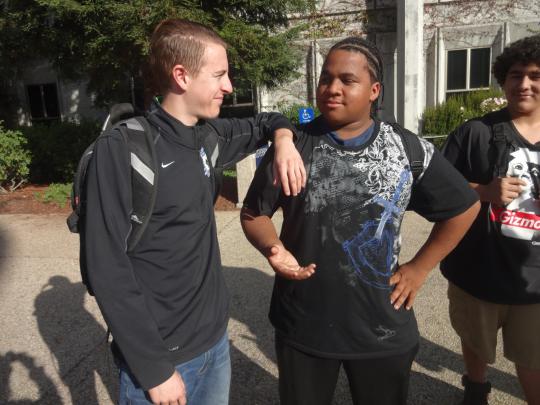Service-Learning Case Study: Psychology and Early Childhood Education
Jessica Hobson, a lecturer in the departments of Psychology and Early Childhood Education, has been teaching at Sonoma State University since 2013 and is one of the many professors to integrate service-learning into their curriculum. Her passion for service-learning stemmed from her undergraduate years at Florida Atlantic University, where she received the Caring Award for Outstanding Record of Volunteer Services. Even though service-learning as a teaching strategy was part of how she learned and how she got involved with her field of interest, she was unfamiliar with
service-learning as a concept until it was explained at the Tips & Trends in Service-Learning Workshop.
Since then, Jessica Hobson has worked with the Center for Community Engagement to design and implement several service-learning courses for her students in her various psychology and education early development classes. Some of these examples include Shadow Day VII, Shadow Day VIII, Discovery Day VII, the Preschool Garden Project, and SSU's first ever Book Buddies.
Hobson has also designed a service-learning element for her Psychology of Play class, where the goal was to teach her students about the importance of playing with a young child. This activity was organized together with 4Cs of Sonoma County and required the students to become a play tutor by spending an hour with the same child at the preschool six times throughout the semester. The students were then required to write a reflection paper to tie in what they learned in class with the service-learning experience.
The 4Cs Partnership didn't end there. Hobson's students worked with Gold Ridge in Rohnert Park to build a garden. The work is ongoing and the results are spectacular for all involved.
Another activity she designed was in collaboration with Kawana Elementary School in Santa Rosa, where almost all the elementary students are English language learners. Each student in Jessica Hobson's class visited the school twice to develop slam poetry with the sixth graders, which were then presented to their parents, Sonoma State University students, and fellow classmates on the SSU campus. The poems written by the elementary students were about personal issues or struggles, such as dealing with issues related to ethnic identity, child abuse, or divorced parents.
One of the main struggles Hobson has with service-learning is that the designing and the grading process of the project can be time consuming. Thankfully, all those hours spent working with the schools create a rewarding personal experience that allow her students to think critically and move towards a deeper level of learning. She realizes that students want to know that what they are being taught in class means something, is valuable, and that what they are learning is part of a bigger picture.
Brandon Lee, one of the service-learner participants at Book Buddies, explained, "This activity was very beneficial and [relevant] because it dealt with exactly what we are learning about. It was also a great service-learning project because it essentially gave back to the community and helped them get a better idea of how to analyze words and create a storyline."
These projects not only impact the service-learners but impact those they work with as well. One Roseland University Prep student described their experience at Shadow Day, saying,"...now I see SSU is another option for me for college... SSU has great people to be around and a good positive attitude energy that we felt yesterday. For the next five years, my hope is to attend CSU East Bay or SSU for sure; those are definitely my top choices now."
Seeing her students engage in learning and come alive through the projects she creates is just one of the things she enjoys about service-learning. Hobson also creates an opportunity to work at a broader level while still doing something she is passionate about by facilitating her students and integrating service-learning into her curriculum.
Although she has yet to see what careers her students pursue after they graduate, she has heard that those who love service-learning pursue the same line after work; for example some graduates may become teachers. The overwhelming enthusiasm from her students in response to her projects make service-learning a useful tool in showing the students that there is in fact a link between what they are learning, the problems in their community, and how they can solve those issues.

Author: Cera Murata









